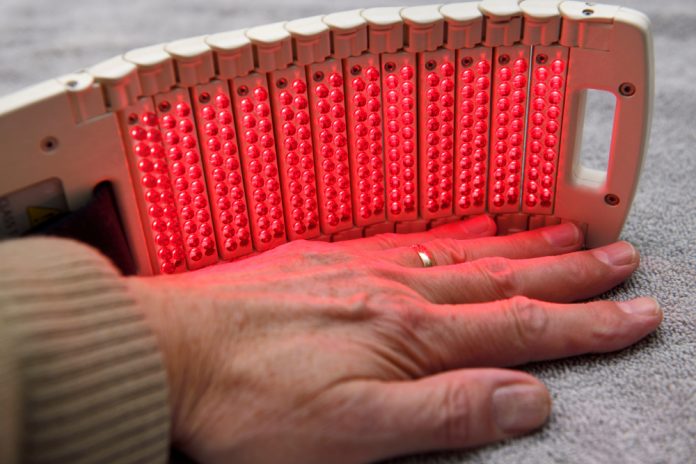Ageing, an inevitable process, has long intrigued scientists and the public alike. The quest for methods to delay ageing spans centuries, from alchemy to modern biotechnology. Among the recent advancements, red light photobiomodulation (PBM) has emerged as a promising technique. This non-invasive therapy, which utilises red and near-infrared light, is gaining attention for its potential to delay ageing and promote overall health.
What is Red Light Photobiomodulation?
Photobiomodulation involves the use of low-level lasers or light-emitting diodes (LEDs) to deliver specific wavelengths of light to the body. Red light PBM typically employs wavelengths between 600 and 700 nanometers, while near-infrared light ranges from 800 to 1200 nanometers. These wavelengths penetrate the skin and tissues, triggering beneficial cellular processes.
The fundamental mechanism of red light PBM is its interaction with the mitochondria, the powerhouses of cells. The light photons are absorbed by cytochrome c oxidase, a key enzyme in the mitochondrial respiratory chain. This interaction enhances mitochondrial function, leading to increased adenosine triphosphate (ATP) production, reduced oxidative stress, and improved cellular repair and regeneration.
Delaying Ageing with Red Light PBM:
1. Enhanced Cellular Energy Production
Ageing is often associated with a decline in mitochondrial function, leading to decreased ATP production and increased oxidative damage. Red light PBM helps counteract this decline by boosting mitochondrial activity. Enhanced ATP production supports cellular functions, including repair mechanisms, which are crucial for maintaining tissue integrity and function as we age.
2. Reduction of Inflammation and Oxidative Stress
Chronic inflammation and oxidative stress are significant contributors to the ageing process. Red light PBM has been shown to reduce the levels of pro-inflammatory cytokines and increase antioxidant enzyme activity. By mitigating inflammation and oxidative damage, red light PBM helps protect cells from age-related deterioration.
3. Improved Skin Health
The skin is one of the most visible markers of ageing. Red light PBM has demonstrated remarkable effects in improving skin health by stimulating collagen production and promoting tissue repair. Clinical studies have shown that regular exposure to red light can reduce wrinkles, improve skin texture, and enhance overall skin appearance. This rejuvenation effect is attributed to increased collagen synthesis and better hydration.
4. Enhanced Cognitive Function
Cognitive decline is a common aspect of ageing. Red light PBM has shown potential in supporting brain health. Research indicates that red and near-infrared light can penetrate the skull and improve mitochondrial function in brain cells. This enhancement leads to improved cognitive performance, better memory, and increased neuroprotection against age-related neurodegenerative diseases.
5. Muscle Recovery and Physical Performance
Ageing often brings a decline in muscle mass and function. Red light PBM has been found to aid in muscle recovery and enhance physical performance. By improving mitochondrial function and reducing oxidative stress in muscle cells, red light PBM supports muscle repair and growth. This can be particularly beneficial for older adults seeking to maintain an active lifestyle.
Practical Applications and Accessibility
Red light PBM is becoming increasingly accessible, with various devices available for home use. These devices range from handheld units to full-body panels, allowing users to integrate PBM into their daily routines. For those seeking professional treatments, many clinics and wellness centers offer red light therapy sessions.
When using red light PBM, it is essential to follow guidelines regarding exposure time and distance from the light source. Overexposure can lead to diminishing returns or even adverse effects. Therefore, it is advisable to start with shorter sessions and gradually increase exposure as tolerated.
Red light photobiomodulation represents a promising frontier in the fight against ageing. By enhancing cellular energy production, reducing inflammation, improving skin health, and supporting cognitive and physical functions, red light PBM offers a multifaceted approach to delaying the ageing process. As research continues to uncover the full potential of this therapy, it holds the promise of not only extending lifespan but also enhancing the quality of life in our later years.
Embracing red light PBM as part of a holistic approach to health and wellness could be a significant step towards ageing gracefully and healthily. Whether through home devices or professional treatments, this innovative therapy offers a beacon of hope in our quest for longevity and vitality.








